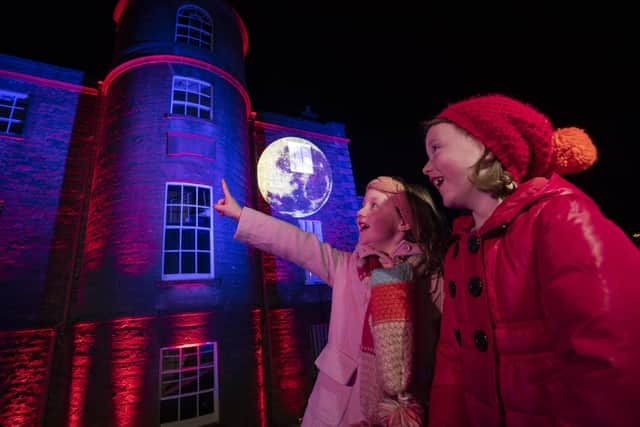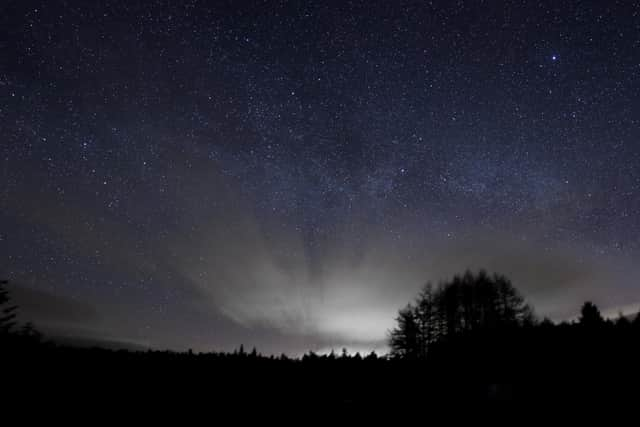Embark on a space odyssey from your garden with these top tips
and live on Freeview channel 276
Throughout January and February there are a number of astronomical events taking place which can be enjoyed from the safety of your own home.
Discover Northern Ireland has joined with Armagh Observatory and Planetarium, the Irish Astronomical Association, and OM Dark Sky Park and Observatory, located within the darkest skies of Davagh Forest within the Sperrin Mountains in County Tyrone, to give some astronomical advice.
Advertisement
Hide AdAdvertisement
Hide AdThey have compiled the following list of events in the night sky in January and February, perfect for the amateur stargazer:


January
Early evenings in mid-January provide a chance to see the elusive Mercury, the closest planet to the Sun, and therefore the hardest to see. Look low down in the south-west about 30-45 minutes after your local sunset for a little twinkling point shining in the twilight glow. Mercury reaches its greatest elongation on January 24, which is when you will get the best view of the rocky planet.
Periods when there is no bright moonlight give the best chance to see the beautiful Aurora Borealis, or Northern Lights, so any time in January up to about the 20th, and from approximately 4th – 20th of February, are good. But you’ll need a good clear view to the north, and a nice dark site. We never know when aurorae are going to appear, but websites such as www.spaceweather.com give short-notice predictions as best they can, and you can sign up for aurora alerts to your phone.
Mars and the Moon are close together in the night sky from January 20-21. Mars is still visible throughout January but keep an eye out on the evening of the 20th January looking south-west, for the Red Planet glowing to the upper left of the first quarter moon. The next night, you should see Mars a similar distance from the Moon, but to its upper right.
Advertisement
Hide AdAdvertisement
Hide Ad

The International Space Station (ISS) can be seen in the early evening skies from January 22 to February 3, looking like a very bright moving star, generally moving from the west over to the south, and sometimes on towards the east. The times vary each evening; visit www.heavens-above.com for up-to-date information.
February
We might not be able to celebrate Valentine’s Day in the same way this year, so why not choose a night of stargazing with your significant other. The red supergiant, Betelgeuse is sometimes called the Valentine’s Day Star, and is located on the shoulder of Orion the Hunter. Betelgeuse pulsates in size, expanding outward between the size of Mars’ orbit and Jupiter’s orbit. To us, it looks like it increases and decreases in brightness in the night sky. Some say it is reminiscent of a beating heart.
If you follow the line of Orion’s belt up to the right you come to the bright orange star Aldebaran, ‘the Eye of the Bull, Taurus’, and going on a bit further you find the lovely star group called the Pleiades, or Seven Sisters - a fabulous sight in binoculars or a small telescope.


If you follow the line of the belt down to the left you come to Sirius, the ‘Dog Star’, the brightest star in the sky, and also one of the closest, at ‘only’ 8.6 light years (80 million million km) away. And there are lots of other bright stars on view, like Procyon and Capella, and Castor and Pollux, the Heavenly Twins in Gemini.
Advertisement
Hide AdAdvertisement
Hide AdFrom February 21-28, the International Space Station (ISS) will be visible in the early morning, so this is good for all you early risers. When we say early, we mean early.
On February 25 it will be visible at 5:00am in the south-east. The other times are a little later, going from 5:45am to 6:30am. The ISS will look like a bright moving light moving from one side of the sky to the other.
For more information about Armagh Observatory and Planetarium and OM Dark Sky Park and Observatory along with other places to visit when government guidance permits travel again, visit www.discovernorthernireland.com.
Northern Ireland’s giant welcome will be here for you when the time is right.